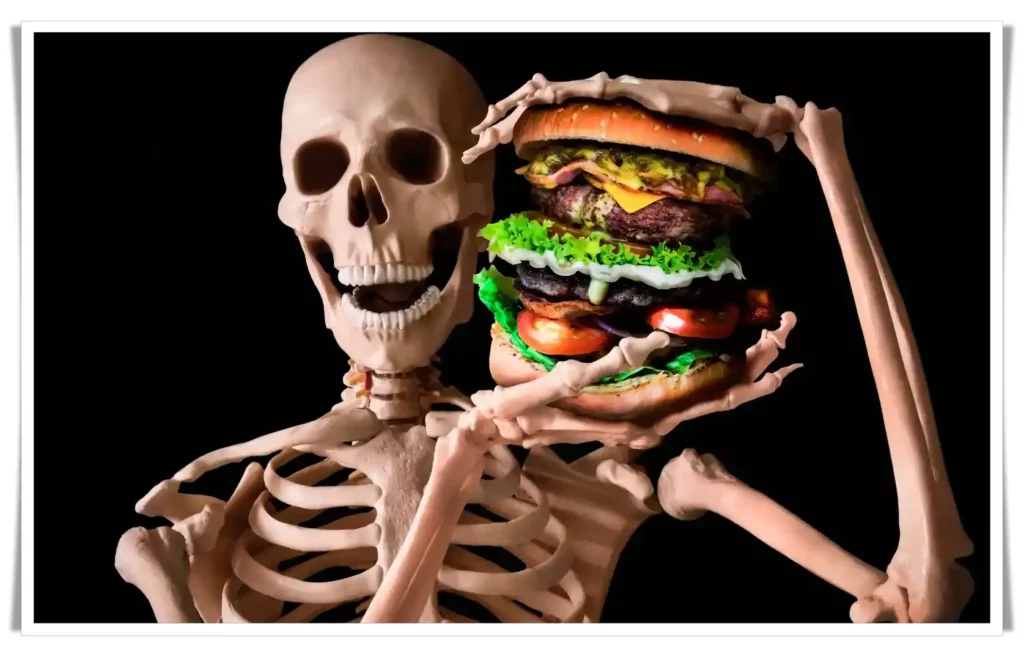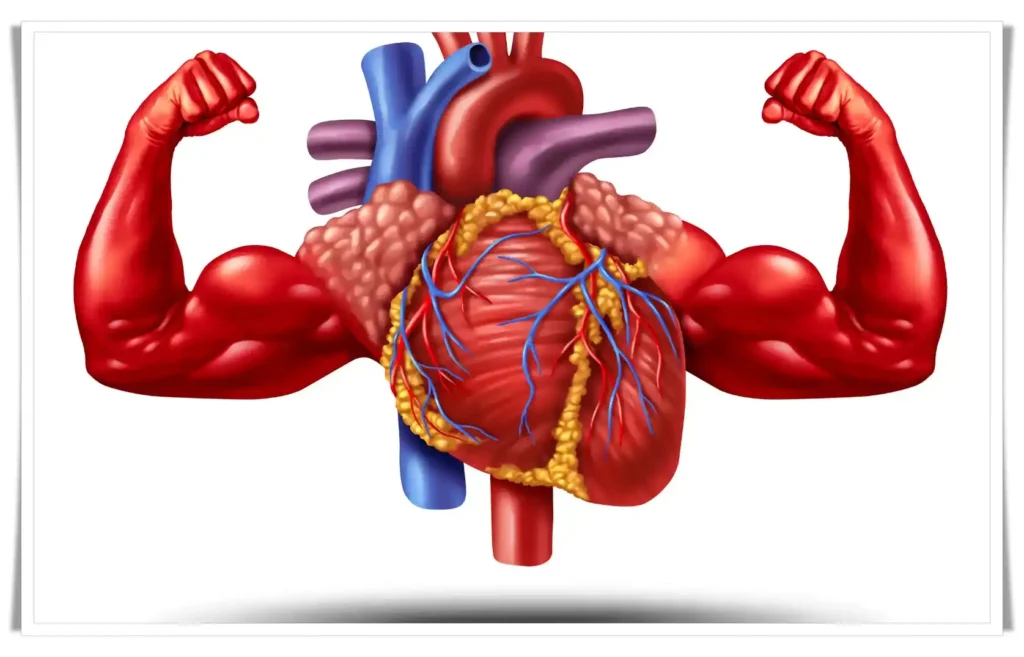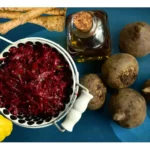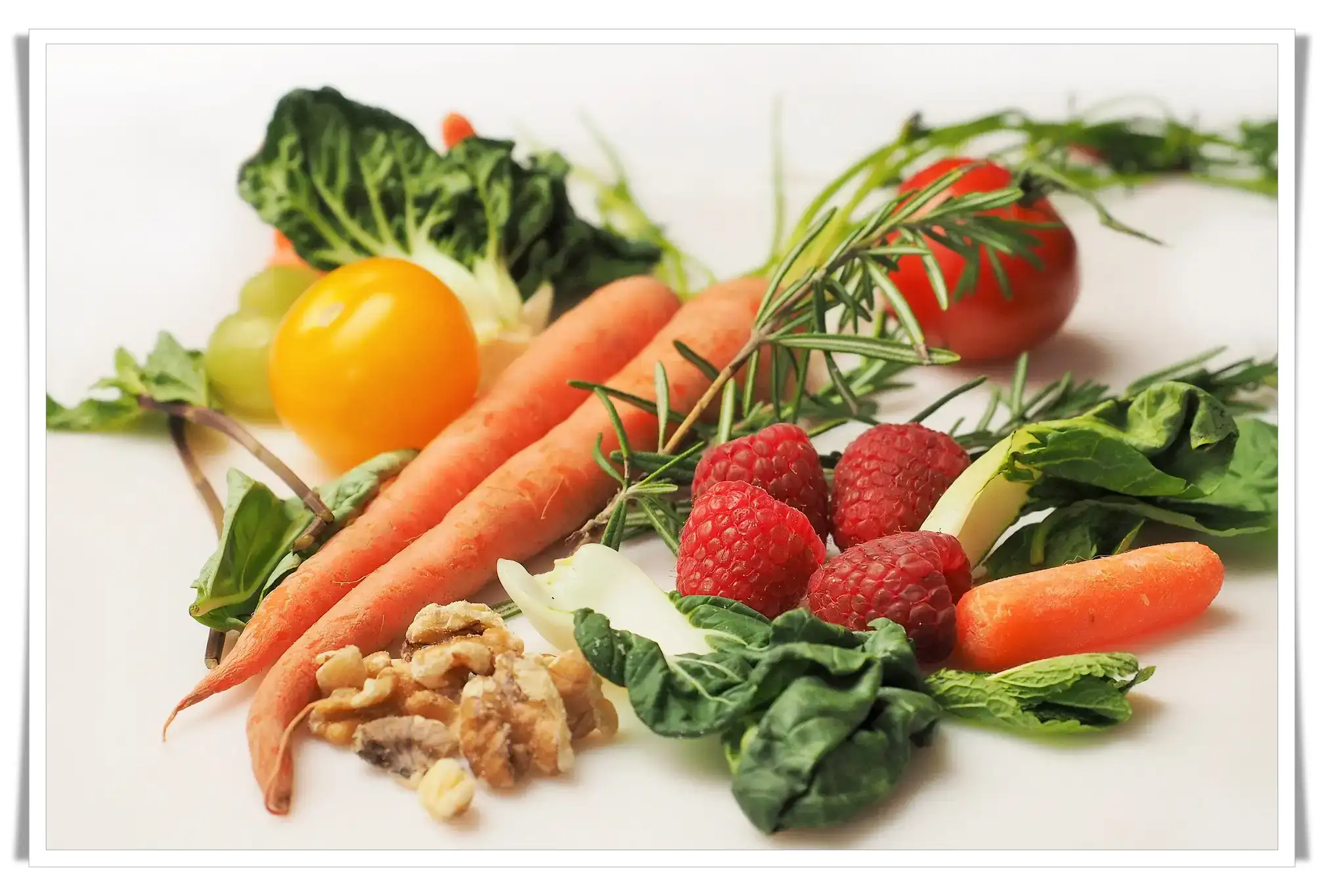Introduction in Prevention
In today's fast-paced world, it’s easy to overlook the importance of prevention. Many of us are prone to seeking quick fixes, especially when it comes to health. I've often found that whilst an immediate solution might seem appealing, the long-term effects of such choices may not always be beneficial. Prevention, combined with small changes, can indeed lead to significant results. This article shows the importance of prevention and how minor dietary and lifestyle adjustments can dramatically improve our health and well-being.
Empower Your Health Journey – Explore My Free Apps for a Vibrant, Healthier Lifestyle Today!
The Dangers of the Modern Diet
Our evolving lifestyle, shaped by the rapid pace of modern living, has witnessed the rise of convenience foods, often at the expense of our health. Historically, our ancestors relied on whole foods, cultivated from the land, rich in essential nutrients. Contrastingly, today, we find ourselves entangled in the web of processed foods, sugary drinks, and quick meal fixes.
When you stop for a moment to analyse the repercussions of this shift, the magnitude becomes startlingly clear. A meal prepared in minutes, whilst saving time, might be stripped of essential nutrients and overloaded with harmful additives, sugars, and unhealthy fats. This trend, driven by convenience, has led to an unprecedented rise in health issues. This is an unhealthy diet!

Diseases that were once rare have now become commonplace. Hypertension, a consequence of excessive salt and unhealthy fats; diabetes, stemming from overconsumption of refined sugars; Alzheimer’s, with potential links to poor diet - these are just the tip of the iceberg.
Let's go into how our modern diet has morphed over the years:
Starting Small Changes for Big Health Outcomes
In the vast sea of dietary advice, fads, and quick fixes, the most effective approach is often the simplest: begin with small, sustainable changes. Many of us aspire to make grand, sweeping modifications to our lifestyles, only to become overwhelmed and revert to old habits. Yet, history and research both affirm that enduring transformation often starts with tiny, deliberate steps.
Take, for example, our daily beverage choices. A sugary drink might offer a temporary energy surge but comes with a plethora of adverse effects, from an inevitable energy crash to long-term health consequences like diabetes. Simply switching that daily soda or sugary coffee for water can have profound benefits, both immediate and long-term. Over time, this single change can lead to better hydration, increased energy, improved skin health, and reduced risk of chronic diseases.
Similarly, consider our meal choices. In our modern, fast-paced lives, it's easy to neglect the inclusion of essential vegetables in our meals. Yet, adding just one serving of vegetables to each meal can be a game-changer. This inclusion not only provides vital nutrients but also introduces dietary fibre, which aids digestion, supports heart health, and can even contribute to weight loss.
The power of these seemingly modest adjustments cannot be overstated. They represent more than just dietary changes; they signify a shift in mindset. A move from seeking short-term gratification to prioritising long-term health and wellness. They remind us that every meal, every choice, is an opportunity to nourish our bodies and minds.
In essence, the journey to optimal health doesn't necessarily begin with a monumental leap but with one small, intentional step. And when consistently taken, these steps combine, propelling us towards a healthier, brighter future.
The Power of Prevention in Daily Choices
There's a profound elegance in the concept of prevention. It underscores the idea that proactive measures, even subtle ones, can circumvent the need for more drastic interventions later. By paying heed to prevention in our everyday choices, especially with what we consume, we set a course towards not just averting potential health issues but also cultivating a life brimming with vitality.
Our body is akin to a finely tuned machine. Each component, each system, functions optimally when provided with the right fuel. Yet, in today's world of fast food, instant meals, and processed snacks, we frequently deprive our bodies of the nutrients they so earnestly need. Instead of wholesome, nourishing meals, our bodies are often subjected to a barrage of additives, sugars, and unhealthy fats.

This divergence from a nutrient-rich diet doesn't just impact our physical health. It cascades into our mental well-being, energy levels, and even emotional equilibrium. The age-old wisdom of "prevention is worth a pound of cure" isn't just a catchy phrase; it's a clarion call, reminding us of the monumental power that resides in everyday decisions.
Let's visualise this concept with a Mermaid diagram, showcasing the bifurcation between preventive measures and the potential health outcomes:
This diagram illuminates the two paths our daily choices can lead us down: one of prevention, leading to optimal health, and the other of neglect, which can result in numerous health issues. The power is, indeed, in our hands. Each meal, each activity, and every seemingly insignificant choice, cumulatively determines our health trajectory.
In conclusion, prevention isn't just a strategy; it's a lifestyle, an ethos. It's a commitment to oneself, valuing our well-being enough to make conscious, deliberate choices, day in and day out.
Superfoods: The Game Changers of Diet
In recent years, the term "superfoods" has catapulted to the forefront of nutritional discussions, and rightfully so. These are not just ordinary foods; they are nutritional powerhouses, densely packed with vitamins, minerals, antioxidants, and other beneficial compounds. The potency of superfoods lies in their capacity to nourish our body holistically — benefiting us physically, mentally, and spiritually.

From luscious berries bursting with antioxidants to the heart-healthy fats in nuts, superfoods are diverse and abundant. They don't just support our body in its regular functions; they elevate it, enhancing cognitive abilities, boosting energy levels, and fostering a sense of well-being.
What’s truly remarkable about these nutrient-rich foods is their potential to mitigate, and in some cases, even reverse the detrimental effects of certain diseases. By incorporating them into our diet, we bolster our body's defences, giving it the tools it needs to repair, rejuvenate, and thrive.
One doesn’t need to embark on a worldwide expedition to source these gems. Many superfoods are readily accessible, waiting to be discovered in the aisles of local grocery stores or at vibrant farmer’s markets.
To better illustrate the impact and sources of these superfoods, let’s visualise them with a diagram:
Decoding Supermarket Labels: An Essential Guide to Informed Eating
Navigating the aisles of a supermarket can sometimes feel like being lost in a maze. With vibrant packaging, catchy slogans, and an array of health claims, it's easy to get distracted and misled. However, if there's one compass to guide us towards healthier choices, it's the humble food label.
Now, I completely understand the hesitations many have about reading food labels. "There's no time during a hurried shop", "The print is too tiny", "It's all scientific jargon!" – these are common refrains I hear. And honestly, they're valid concerns. But it's crucial to note that these label designs aren't just accidental inconveniences. In many instances, they are deliberately crafted this way.
Why? Simply put, certain aspects of product packaging and labelling are designed to downplay the less appealing ingredients while amplifying the product's supposed benefits. It's a marketing strategy that, unfortunately, works all too well. By making the list of ingredients hard to read, or using complicated names for simple additives, consumers are discouraged from truly understanding what they're about to consume.

So, what's inside might be a cocktail of additives, hidden sugars, and unhealthy fats, all masquerading under scientific names or nestled discreetly amidst other ingredients. For instance, sugar might not always be labelled plainly as 'sugar'. It might appear as 'fructose', 'sucrose', 'maltose' or myriad other aliases.
The good news? With a little effort and knowledge, you can become adept at identifying these hidden culprits. Here are a few tips:
- Prioritise the First Three Ingredients: Ingredients are listed in descending order by weight. The first three ingredients typically make up the largest portion of the product.
- Look Out for Hidden Sugars: If you spot words ending in '-ose', it's likely a sugar. Similarly, 'syrups' or 'nectars' are other common culprits.
- Beware of Trans Fats: Even if a product claims '0g trans fats', it might contain up to 0.5g per serving. Check for terms like 'hydrogenated oils' in the ingredients.
- Opt for Short Ingredient Lists: As a general rule, fewer ingredients often mean fewer additives and a closer-to-natural product.
In a nutshell, while food labels might appear daunting, they're your best tool for ensuring what you eat aligns with your health goals. A few extra minutes spent in the supermarket aisle now can save you countless hours, and potential health issues, in the future. So, arm yourself with knowledge and take control of your dietary choices!
Table: Superfoods and Their Benefits
| Superfood | Primary Benefit | Source |
|---|---|---|
| Berries | Rich in antioxidants | Link1 |
| Nuts | Boost heart health | Link2 |
| Leafy Greens | High in vitamins | Link3 |
| Whole Grains | Promote digestion | Link4 |
| Salmon | Omega-3 fatty acids | Link5 |
| Avocado | Healthy fats & vitamins | Link6 |
| Quinoa | High protein & fibre | Link7 |
| Broccoli | Detoxifying properties | Link8 |
| Green Tea | Metabolism & antioxidants | Link9 |
| Eggs | Quality protein & nutrients | Link10 |
| Kiwi | Vitamin C & digestive enzymes | Link11 |
| Dark Chocolate | Antioxidants & mood enhancer | Link12 |
| Greek Yogurt | Probiotics & protein | Link13 |
| Almonds | Healthy fats & vitamin E | Link14 |
| Flaxseed | Omega-3 & fibre | Link15 |
| Blueberries | Antioxidant powerhouse | Link16 |
| Spinach | Iron & vitamins | Link17 |
| Lentils | Protein & dietary fibre | Link18 |
| Chia Seeds | Omega-3 & bone health | Link19 |
| Garlic | Immunity & heart health | Link20 |
FAQs:
1. What are superfoods?
Superfoods are foods that are especially rich in nutrients and renowned for the numerous health advantages they provide. They typically contain a combination of essential vitamins, minerals, antioxidants, and other beneficial compounds that can enhance overall health and well-being.
2. Why is prevention better than cure?
Prevention is pivotal as it targets the underlying factors or causes that could lead to health issues. By addressing these early on, one can often avert the onset of diseases or conditions. On the other hand, cures predominantly focus on treating the symptoms or manifestations of the disease after it has occurred. Prevention reduces the physical, emotional, and financial strain that often accompanies treatments and interventions.
3. How can I start implementing small changes for better health?
The journey to better health begins with awareness and intention. Start by becoming more conscious of your daily food choices. Prioritise whole, natural foods over processed ones, and listen to your body's cues. Set achievable goals, such as incorporating a vegetable into every meal or taking short walks daily. Celebrate small victories and remember that consistency over time can lead to significant positive changes in your health.
Study on Nutrition and NCDs: Prevention is Better Than Cure!
Food, diet, and nutrition are crucial determinants of non-communicable diseases (NCDs). Dietary patterns play a significant role in conditions such as cardiovascular diseases, certain cancers, and diabetes. Processed foods and imbalanced diets are linked to conditions like elevated blood pressure, cholesterol levels, and insulin resistance, which are precursors to NCDs.
Of the 52.8 million global deaths in 2010, 34.5 million were attributed to NCDs like heart diseases, diabetes, cancers, and respiratory diseases. Notably, 80% of these deaths occurred in low- and middle-income countries (LMICs), with 29% affecting those under 60.
Global dietary trends show an increase in calorie intake from meats, sugars, and fats, and a decline in fibre-rich foods like whole grains. This nutritional shift, especially evident in LMICs, heightens the risk of NCDs. Undernutrition also has long-term effects, predisposing individuals to NCD-related risks later in life.
Recent changes in food systems, influenced by globalisation, have impacted nutrition, food security, and environmental sustainability. These changes also affect the nutritional quality of available foods, playing a role in the prevalence of NCDs.

Despite the UN’s 2011 Political Declaration on NCDs advocating for multisectoral action and monitoring, there's a noticeable lack of integrated policy implementation at the global and national levels. The World Health Organization (WHO) has been at the forefront of shaping a global response to NCDs. Still, more coordination is required to address these challenges comprehensively.
In terms of dietary patterns, predominantly plant-based diets, rich in vegetables, fruits, grains, and minimal meat, have been found to reduce the risk of several NCDs. Such diets help maintain a healthy weight and blood pressure and are abundant in dietary fibre. On the other hand, consumption of red and processed meat increases the risk of colorectal cancer, and diets high in saturated and trans fats elevate cardiovascular risks.
Body composition, particularly overweight and obesity, is intrinsically linked to higher mortality rates and increased risk from several NCDs.
For a more detailed examination of this topic, refer to the original research available on www.wcrf.org and www.ncdalliance.org.
Conclusion
Stepping on a path towards improved health need not be an overwhelming task. Indeed, it's the incremental, steady alterations in our daily routines that eventually snowball into transformative outcomes. By placing prevention at the forefront and by being deliberate about our dietary decisions, we have the power to bring about a marked enhancement in our overall well-being. As you read this, I hope you're inspired to embark on this journey, even if it begins with a single step. Remember, every choice you make, no matter how small, plays a pivotal role in shaping your health.
To find out more about this topic and gather more insights, I invite you to explore my detailed article titled “From Kitchen to Gut: The Health Benefits of Home Cooking.” It underscores the myriad advantages of preparing meals at home. Moreover, for a visual treat and further understanding, do watch my enlightening YouTube video titled "Dietary Changes Can Help Prevent the Ten Signs of Cancer." It sheds light on the profound influence diet has on our overall health and its role in cancer prevention.
Call to Action
Did this article strike a chord with you? Are there small dietary or lifestyle tweaks that you've implemented which have culminated in remarkable health benefits? I'm eager to hear your stories. Please share your journey, insights, and experiences in the comments section below. Let's build a community where we inspire and get inspired!





This was beautiful Admin. Thank you for your reflections.
I do agree with all the ideas you have introduced on your post They are very convincing and will definitely work Still the posts are very short for newbies May just you please prolong them a little from subsequent time Thank you for the post
you are truly a just right webmaster The site loading speed is incredible It kind of feels that youre doing any distinctive trick In addition The contents are masterwork you have done a great activity in this matter
I just could not leave your web site before suggesting that I really enjoyed the standard information a person supply to your visitors Is gonna be again steadily in order to check up on new posts
I am not sure where youre getting your info but good topic I needs to spend some time learning much more or understanding more Thanks for magnificent info I was looking for this information for my mission
I do agree with all the ideas you have introduced on your post They are very convincing and will definitely work Still the posts are very short for newbies May just you please prolong them a little from subsequent time Thank you for the post
Really.. thank you for starting this up.
Hello everyone, I sincerely look forward to reading the posts on this website as they are updated frequently. It carries enjoyable items.
Thank you for the fortunate post. It was rather entertaining. I look forward to more from you. How can we get in touch with you?
I am not sure where you’re getting your info, but good topic. I needs to spend some time learning much more or understanding more. Thanks for magnificent info I was looking for this information for my mission.
I do agree with all the ideas you have introduced on your post. They are very convincing and will definitely work. Still, the posts are very short for newbies. May just you please prolong them a little from subsequent time? Thank you for the post.
I do believe all the ideas youve presented for your post They are really convincing and will certainly work Nonetheless the posts are too short for novices May just you please lengthen them a little from subsequent time Thanks for the post
I just could not leave your web site before suggesting that I really enjoyed the standard information a person supply to your visitors Is gonna be again steadily in order to check up on new posts
I loved even more than you will get done right here. The overall look is nice, and the writing is stylish, but there’s something off about the way you write that makes me think that you should be careful what you say next. I will definitely be back again and again if you protect this hike.
It was great seeing how much work you put into it. The picture is nice, and your writing style is stylish, but you seem to be worrying that you should be presenting the next article. I’ll almost certainly be back to read more of your work if you take care of this hike.
It was great seeing how much work you put into it. The picture is nice, and your writing style is stylish, but you seem to be worrying that you should be presenting the next article. I’ll almost certainly be back to read more of your work if you take care of this hike.
Hi there, I thought I saw you visited my website, so I came back to say hello. I suppose I could use some of your ideas as I’m trying to find out how to improve my website.
you are in reality a good webmaster The website loading velocity is amazing It sort of feels that youre doing any distinctive trick Also The contents are masterwork you have done a fantastic job in this topic
Wow, fantastic weblog layout! How long have you been running a blog for?
you make running a blog look easy. The entire look of your website is excellent, let alone the content material!
You can see similar: najlepszy sklep and here najlepszy sklep
order atorvastatin 40mg online buy atorvastatin 20mg sale lipitor 20mg pill